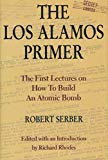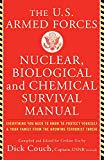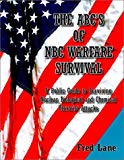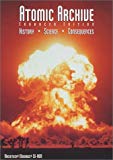The Manhattan Project and the Atom Bomb
Just before the beginning of World War II, Albert Einstein wrote a letter to President Franklin D. Roosevelt. Urged by Hungarian-born physicists Leo Szilard, Eugene Wingner, and Edward Teller, Einstein told Roosevelt about Nazi German efforts to purify Uranium-235 which might be used to build an atomic bomb.
Shortly after that the United States Government began work on the Manhattan Project. The Manhattan Project was the code name for the United States effort to develop the atomic bomb before the Germans did.
“The first successful experiments in splitting a uranium atom had been carried out in the autumn of 1938 at the Kaiser Wilhelm Institute in Berlin”(Groueff 9) just after Einstein wrote his letter.
So the race was on. Major General Wilhelm D. Styer called the Manhattan Project “the most important job in the war . . . an all-out effort to build an atomic bomb.”(Groueff 5) It turned out to be the biggest development in warfare and science’s biggest development this century.
The most complicated issue to be addressed by the scientists working on the Manhattan Project was “the production of ample amounts of ‘enriched’ uranium to sustain a chain reaction.”(Outlaw 2) At the time, Uranium-235 was hard to extract. Of the Uranium ore mined, only about 1/500 th of it ended up as Uranium metal. Of the Uranium metal, “the fissionable isotope of Uranium (Uranium- 235) is relatively rare, occurring in Uranium at a ratio of 1 to 139.”(Szasz 15)
Separating the one part Uranium-235 from the 139 parts Uranium-238 proved to be a challenge. “No ordinary chemical extraction could separate the two isotopes. Only mechanical methods could effectively separate U-235 from U-238.”(2) Scientists at Columbia University solved this difficult problem. A “massive enrichment laboratory/plant”(Outlaw 2) was built at Oak Ridge, Tennessee. H. C. Urey, his associates, and colleagues at Columbia University designed a system that “worked on the principle of gaseous diffusion.”(2) After this process was completed, “Ernest O. Lawrence (inventor of the Cyclotron) at the University of California in Berkeley implemented a process involving magnetic separation of the two isotopes.”(2) Finally, a gas centrifuge was used to further separate the Uranium-235 from the Uranium-238. The Uranium-238 is forced to the bottom because it had more mass than the Uranium-235. “In this manner uranium-235 was enriched from its normal 0.7% to weapons grade of more than 90%.”(Grolier 5) This Uranium was then transported to “the Los Alamos, N. Mex., laboratory headed by J. Robert Oppenheimer.”(Grolier 5)
“Oppenheimer was the major force behind the Manhattan Project. He literally ran the show and saw to it that all of the great minds working on this project made their brainstorms work. He oversaw the entire project from its conception to its completion.”(Outlaw 3)
Once the purified Uranium reached New Mexico, it was made into the components of a gun-type atomic weapon. “Two pieces of U-235, individually not large enough to sustain a chain reaction, were brought together rapidly in a gun barrel to form a supercritical mass that exploded instantaneously.”(Grolier 5) “It was originally nicknamed ‘Thin Man'(after Franklin Roosevelt, but later renamed ‘Little Boy’ (for nobody) when technical changes shortened the proposed gun barrel.”(Szasz 25) The scientists were so confident that the gun-type atomic bomb would work “no test was conducted, and it was first employed in military action over Hiroshima, Japan, on Aug. 6, 1945.”(Grolier 5)
Before the Uranium-235 “Little Boy” bomb had been developed to the “point of seeming assured of success,”(Grolier 5) another bomb was proposed. The Uranium-238 that had been earlier ruled out as an option was being looked at. It could capture a free neutron without fissioning and become Uranium-239. “But the Uranium-239 thus produced is unstable (radioactive) and decays first to neptunium-239 and then to plutonium-239.”(Grolier 5) This proved to be useful because the newly created plutonium-239 is fissionable and it can “be separated from uranium by chemical techniques,”(6) which would be far simpler than the physical processes to separate the Uranium-235 from the Uranium-238.
Once again the University of Chicago, under Enrico Fermi’s direction built the first reactor. “This led to the construction of five large reactors at Hanford, Wash., where U-238 was irradiated with neutrons and transmuted into plutonium.”(6) The plutonium was sent to Los Alamos.
The problem to overcome in the development of the plutonium bomb was an isotope of plutonium. The scientists feared this isotope would cause premature detonation and most of the plutonium would blow apart before it could all fission. “To overcome this so-called ‘defect of nature’, the plutonium had to be brought into a supercritical mass far faster than conventional ballistics could achieve.”(Grolier 6) Physicist Seth Neddermeyer and mathematician John von Neumann devised the theory of “implosion.” A subcritical sphere of plutonium was surrounded by chemical high-explosives. The 5,300 pounds of explosives were all “carefully shaped as ‘lenses.’ When these were detonated, they focused the blast wave so as to compress the plutonium instantly into a supercritical mass.”(Szasz 25)
This was much more complex, and many people doubted that it would work. There was a debate at Los Alamos about whether to test the new plutonium “implosion” bomb before it was actually dropped. “Harvard explosives expert George B. Kistiakowsky and Oppenheimer both argued for such a test, but initially Groves was opposed. He was afraid that if the test failed, the precious plutonium would be scattered all across the countryside.”(Szasz 26) Brigadier General Leslie R. Groves, the man the army placed in charge, was eventually persuaded. Hanford’s plutonium production was increasing fast enough so that a test would cause little delay in time. They feared that if they dropped the untested plutonium bomb and it failed to work, “the enemy would find themselves owners of a ‘gift’ atomic weapon.”(Szasz 26)
The final agreement for the test was that the bomb would be placed in “a gigantic, 214-ton, cylinder-shaped tank (called ‘Jumbo’).”(Szasz 26) If the plutonium correctly fissioned, the tank would be vaporized. If it did not work correctly, the conventional explosives would be contained in the tank and the plutonium would stay in the tank. After further development of the implosion design and fears that “Jumbo” would dramatically distort all “their complicated instrumentation-the raison d’etre for the test,”(Szasz 36) the world’s largest pressure tank was not used.
On Monday, July 16, 1945, at 5:29:45 A.M., Mountain War Time, the plutonium bomb ignited at the Trinity site, a remote site in the New Mexico desert. “The explosion created a brilliant flash that was seen in three states.”(Szasz 83) There were many reports from civilians from all over that described the experience. People who saw it said it looked like the sun had risen for a few minutes and then went back down. Others thought they had seen a large plane or meteor crash. A sheep herder who was laying sleeping on a cot fifteen miles away was blown off. “The Smithsonian Observatory on Burro Mountain confirmed a shock but noted that the vibrations were unlike any earthquake ever recorded.”(Szasz 84) An eight year-old boy was awakened and ran for his Methodist parents, and they considered if this might be the end of the world. The most powerful statement that has been cited in practically every coverage of the atomic bomb is Georgia Green’s experience. She was being driven to Albuquerque. “What was that?” she asked her brother-in-law, who was driving. This was very unusual because Georgia Green was blind.
Brigadier General Farrell wrote a letter for the Secretary of War. “No man-made phenomenon of such tremendous power had ever occurred before . . . Thirty seconds after the explosion came, first, the air blast pressing hard against people and things, to be followed almost immediately by the strong, sustained, awesome roar which warned of doomsday and made us feel that we puny things were blasphemous to dare tamper with forces heretofore reserved to the Almighty. Words are inadequate tools for the job of acquainting those not present with the physical, mental and psychological effects.”(Groueff 355)
Upon witnessing the explosion, reactions among the bomb’s creators were mixed. Their mission had been successfully accomplished, however, they questioned whether “the equilibrium in nature had been upset — as if humankind had become a threat to the world it inhabited.”(Outlaw 3)
Oppenheimer was ecstatic about the success of the bomb, but quoted a fragment from Bhagavad Gita. “I am become Death, the destroyer of worlds.” Many people who were involved in the creation of the atomic bomb signed petitions against dropping the bomb.
The atomic bomb has been used twice in warfare. The Uranium bomb nicknamed “Little Boy,” which weighed over 4.5 tons, was dropped over Hiroshima on August 6, 1945. At 0815 hours the bomb was dropped from the Enola Gay. It missed Ground Zero at 1,980 feet by only 600 feet. “At 0816 hours, in the flash of an instant, 66,000 people were killed and 69,000 people were injured by a 10 kiloton atomic explosion.”(Outlaw 4)
Nagasaki fell to the same treatment as Hiroshima on August 9, 1945. The plutonium bomb, “Fat Man,” was dropped on the city. It missed its intended target by over one and a half miles. “Nagasaki’s population dropped in one split-second from 422,000 to 383,000. 39,000 were killed, over 25,000 were injured. That blast was less than 10 kilotons as well.
Physicists who have studied the atomic explosions conclude that the bombs utilized “only 0.1% of their respective explosive capabilities.”(Outlaw 4)
The use of the atom bomb caused a Japanese surrender which prevented the invasion of Japan and saved millions of lives.
Videos on The Manhattan Project and the Atom Bomb
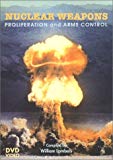
Nuclear Weapons: Proliferation and Arms Control
This DVD is a collection of archival films related to nuclear proliferation and arms control. There is footage of nuclear test explosions, President Eisenhower’s and President Kennedy’s pursuit of a nuclear test ban treaty, Atoms for Peace, civil defense drills for nuclear attack, and speeches related to nuclear arms control efforts. A main menu allows you to choose which historical films to view.
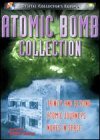
Atomic Bomb Collection
Trinity and Beyond, Nukes in Space: Rainbow Bombs, and Atomic Journeys: Welcome to Ground Zero
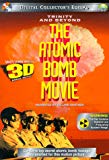
Trinity and Beyond: The Atomic Bomb Movie
In the salad days of nuclear-weapons testing, the United States detonated 331 atomic, hydrogen, and thermonuclear bombs. Many of those explosions appear in Trinity and Beyond, which utilizes a lot of declassified footage, most of it in color. Standouts include the United States’ South Pacific detonation of an atom bomb 90 feet below the water to study the effects on a fleet of ships. Surprise, surprise, they sink! If that wasn’t enough, the navy also loaded the decks with sheep to study the effects of the blast on life forms. Surprise, surprise, they die! Glowing leg of lamb anyone? This film will alternately amuse and horrify you at the rampant irresponsibility of the Soviets and Americans in their quest for nuclear domination. The Russians have the honor of having detonated the largest nuclear bomb ever at a whopping 58 megatons. The Hiroshima bomb was barely a kiloton. Of course, after the U.S. and Russia ceased their activities, the Chinese decided to get in on the act. But that’s a different story for a different documentary.
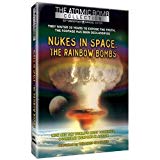
Nukes in Space - Rainbow Bombs
Boasting material that was recently declassified, this documentary presents some startling material about how the United States detonated a number of atomic bombs in space during a top-secret cold war weapons program. The history of military rockets is detailed, beginning with the Nazi V2 rockets that attacked England late in World War II. The problems encountered in the America’s cold war rocketry program is dramatically illustrated with a film montage of U.S. missiles spectacularly blowing up on their launch pads. After the Soviets launched Sputnik, America’s resolve to be able to wage war in space stiffened, and test detonations of atomic weapons in space began. The effects of these little-known tests were bizarre and included electromagnetic disturbances that blew fuses in Hawaii while creating beautiful, if dangerous, artificial auroras that gave the tests the nickname of the “Rainbow Bombs.” Of particular interest in this documentary are tapes of White House meetings at which President John F. Kennedy and his top science and military advisers discussed the atomic tests in space. The bomb detonations caused radiation problems in space, damaging fledgling communications satellites, and the government eventually called an end to the program. This is an entertaining and very informative look at a piece of cold war history that seems like vintage science fiction, yet it’s all real.
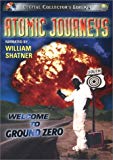
Atomic Journeys - Welcome to Ground Zero
Our atomic heritage resides in sites all over the country-from the Trinity test area to natural-gas wells in Colorado-and many of them are open to the public. Plan your vacation with Atomic Journeys: Welcome to Ground Zero, a blast through memory lane narrated by the perfectly suited William Shatner. Never-before-seen footage of test explosions and top-secret and work labs explores the history of America’s nuclear programs, and interviews with current and former atomic scientists and engineers give depth to sights such as “the most bombed place on Earth” in Nevada. Learn about nonmilitary uses of nuclear weapons, the rationales behind the different programs, and where you can find these strange places. The musical score is a special bonus, performed by the Moscow Symphony Orchestra in a goodwill gesture of post-cold-war cooperation.
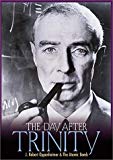
The Day After Trinity
The Day After Trinity is a haunting journey through the dawn of the nuclear age, an incisive history of humanity’s most dubious achievement and the man behind it-J. Robert Oppenheimer, the principal architect of the atomic bomb. Featuring archival footage and commentary from scientists and soldiers directly involved with the Manhattan Project, this gripping film is a fascinating look at the scope and power of the Nuclear Age.
